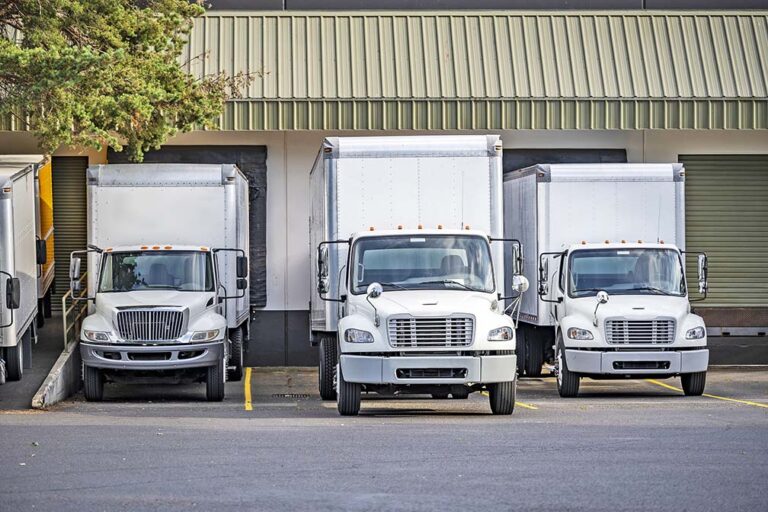LITTLE ROCK, Ark. — Trucking is an industry that offers a huge variety of opportunities for drivers, but it’s often assumed that “trucker” is a term reserved for only those who drive Class 8 rigs over the road (OTR).
Many drivers, however, move on from their OTR positions to opportunities that allow them to be home more or even get into business ownership at a reduced cost.
Some of those drivers end up with work vehicles that fall into the Class 1 to Class 7 categories.
Commercial Truck Trader has been helping new and existing businesses find the equipment they need for many years. Charles Bowles, trader director of commercial vehicle OEM and strategic initiatives at Commercial Truck Trader, knows the joys and frustrations of helping new trucking businesses get started. He’s seen the impact of COVID and of economic booms and busts on all sorts of industries.
“Last year was a good year for vocational trucks, what some people call straight trucks,” Bowles said. “There was a dearth of supply which really had far-reaching effects across the whole ecosystem.”
He went on to describe the issues of body manufacturers, who often buy trucks with a cab and bare chassis and mount their own manufactured body types to them. Some get box bodies, some dump or tank or flat. In fact, just about any configuration you’d find on a Class 8 trailer you can find on a smaller truck.
Just as in the Class 8 market, body manufacturers experienced difficulty obtaining new trucks. The way builds were prioritized had an impact, too.
“One of the things that was particularly challenging is they would prioritize build outs of the higher margin indices in the lower classes of SUVs and pickup trucks,” Bowles said. “Because, you know, they had a high price point they had a high margin associated with them.”
While businesses searching for a small utility truck or box truck found them difficult to locate, luxury custom pickup trucks and SUVs were plentiful because they were easier to sell and more profitable.
Today, the landscape has changed.
Inventories are growing as fewer buyers are found. The same economic pressures that impact the OTR segment of trucking are hitting the smaller local and regional businesses, too. That puts pressure on the body manufacturers because the truck builders are allocating trucks to the types that are selling.
“Nobody’s happy with the scrutiny of builders. They will not continue to allocate to a dealer who has similar stock on his lot for a long period of time,” Bowles remarked. “They want that product to move.”
Moving vehicular product is very dependent on the availability of financing, and that’s another issue facing buyers.
“Regardless of the class of vehicle, we’re seeing the price of money; it’s so expensive right now,” Bowles said. “Interest rates are high and credit requirements have really tightened.”
One strong area that is attracting more buyers is the “final mile” segment of the trucking industry. The proliferation of online retailers has caused a massive increase in package delivery, and vehicles from cargo vans to small box trucks are being purchased for local and regional delivery services.
On the other side of the coin, construction vehicles — from pickup trucks to larger vehicles — aren’t selling. That’s a surprise, considering the amount of government money earmarked for infrastructure projects.
Overall, Bowles says, the vehicles in Classes 1-3 are very slow.
“That’s an expense that, if someone postpones, it’s generally an indication of something underlying that is making affordability an issue,” Bowles explained. “When we see spot rates drop, we know for a fact that there’s less freight.”
That decline in freight impacts more than the trucking industry. Reduced manufacturing means fewer employees being paid and less overtime money to spend. Reduced business for local companies means less revenue to spend on new equipment.
All of it is a function of the economy.
Bowles and his team has diagnostic tools available that help them understand the market and what buyers want — and don’t want. One report, vehicle detail page views, helps them judge interest in a particular type of vehicle. Interested buyers click on listings to see more information about each vehicle.
When they don’t click, they aren’t serious about buying.
For now, Bowles says that dump trucks and “chassis cabs,” or trucks with cabs and bare frames, are very popular.
“People are still looking like crazy and can’t find them,” he said. “For tow trucks and wreckers, its about the same.
Where Bowles is seeing declining interest is in electric vehicles (EVs).
New government emissions and greenhouse gas mandates require more emphasis on EVs in coming years, but buyer interest is waning.
“It appears that the early adopters have adopted,” he said. “They would be like the large delivery fleets that have the financial wherewithal to try some of the new technology.”
Smaller businesses with less capacity for experimentation may be wary of investing in EVs, Bowles added.
“We’re seeing growth in sales, but that growth is flattened,” he said. “Now, it’s just a tiny growth line, and I don’t know if that’s going to change any time soon.”
Bowles explained that buyers still have “range anxiety,” and they’re concerned about charging infrastructure as well. Residual sales values play a role, too. In short, would-be buyers aren’t confident EVs can cover the miles, find charging stations and retain any value when the time comes to sell.
He pointed out that manufacturers are now standardizing charger types so that more vehicles can use each station and more stations are being built, but it takes time.
In 2023, U.S. Class 8 sales totaled 266,752 according to Wards Intelligence.
That number represents a fraction of total truck sales, however.
Auto manufacturers also sell Classes 1-7 trucks, and familiar Class 8 names often sell trucks in classes 5-7, along with foreign competitors such as Hino and Isuzu.
Trucks of all classes can be found at Commercial Truck Trader. A total of 53,156 Class 7 (26,001-33,000 pound) trucks were sold last year, along with 77,994 Class 6 (19,501-26,000 pound) trucks. Class 5 (16,001-19,500 pound) numbered 83,374.
Smaller trucks may not always garner the pride and prestige of those lumbering tractor-trailers, but their drivers prove that hard work and dedication comes in trucks of all sizes.
Cliff Abbott is an experienced commercial vehicle driver and owner-operator who still holds a CDL in his home state of Alabama. In nearly 40 years in trucking, he’s been an instructor and trainer and has managed safety and recruiting operations for several carriers. Having never lost his love of the road, Cliff has written a book and hundreds of songs and has been writing for The Trucker for more than a decade.







